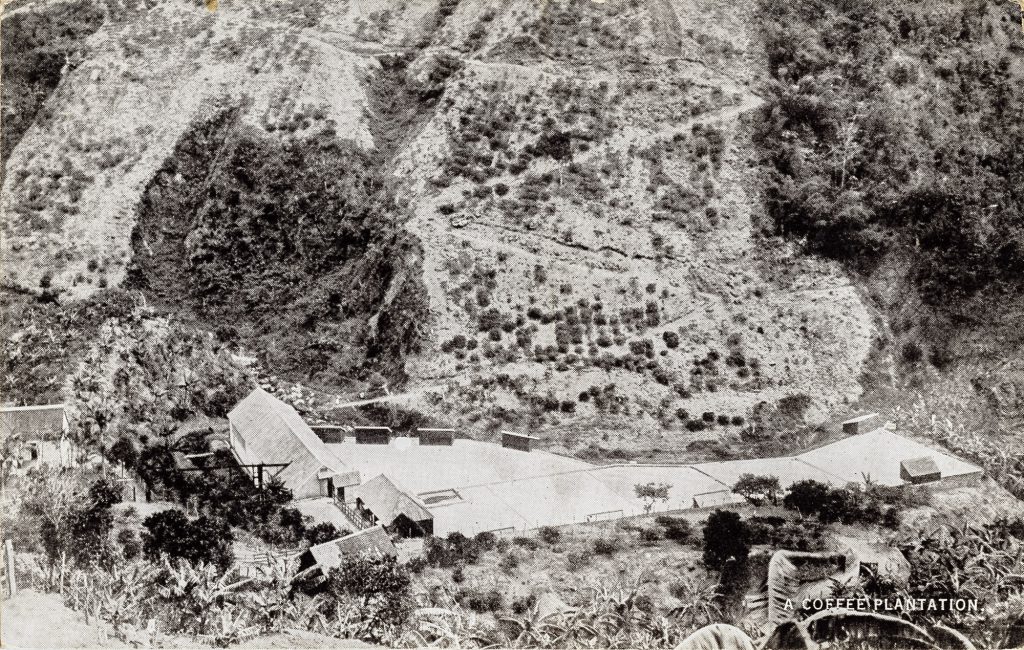
A postcard depicting a coffee plantation in Jamaica. The photograph is undated, but the photographer, E. Wells Elliott, was active mainly between 1900 and 1920, so it is safe to assume that the photograph is from around this period. The photograph is taken from a high vantage point, and shows the mill and the drying patios at the bottom of the hill. But the most striking aspect of the card — and the reason I bought it — is the view across the valley.
It depicts landscape in decline, one badly degraded by soil erosion. The trees were planted in a grid, with (seemingly) no attempt to plant in a way that would conserve the soil and nutrients. Only a patchwork of trees, most near the bottom of the hill, survive. There is a stark contrast between the degraded coffee farm and the lush, rich vegetation immediately to the right. Many farms, apparently, were like this — “most plantations,” wrote Antonio di Fulvio in 1938, “are found on the sides of mountains and high plains, on steep landscapes exposed to erosion.”
